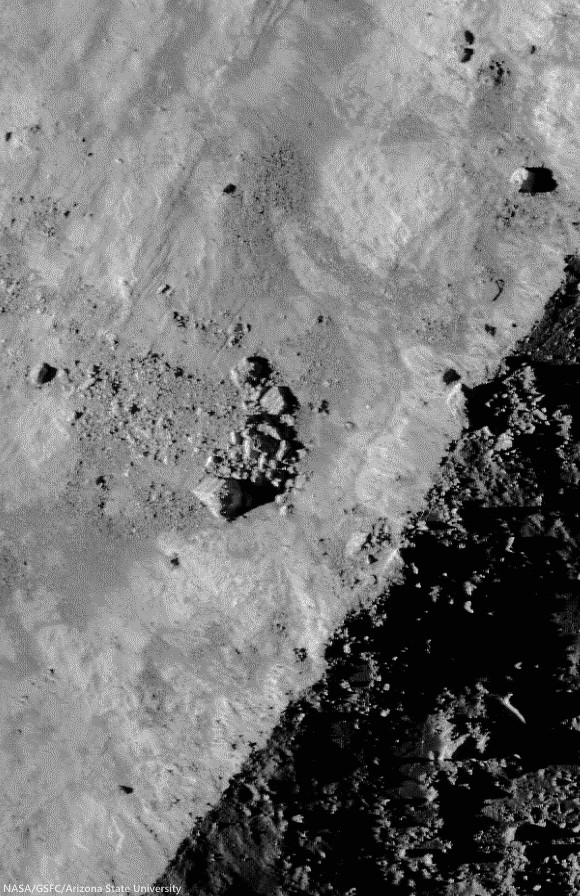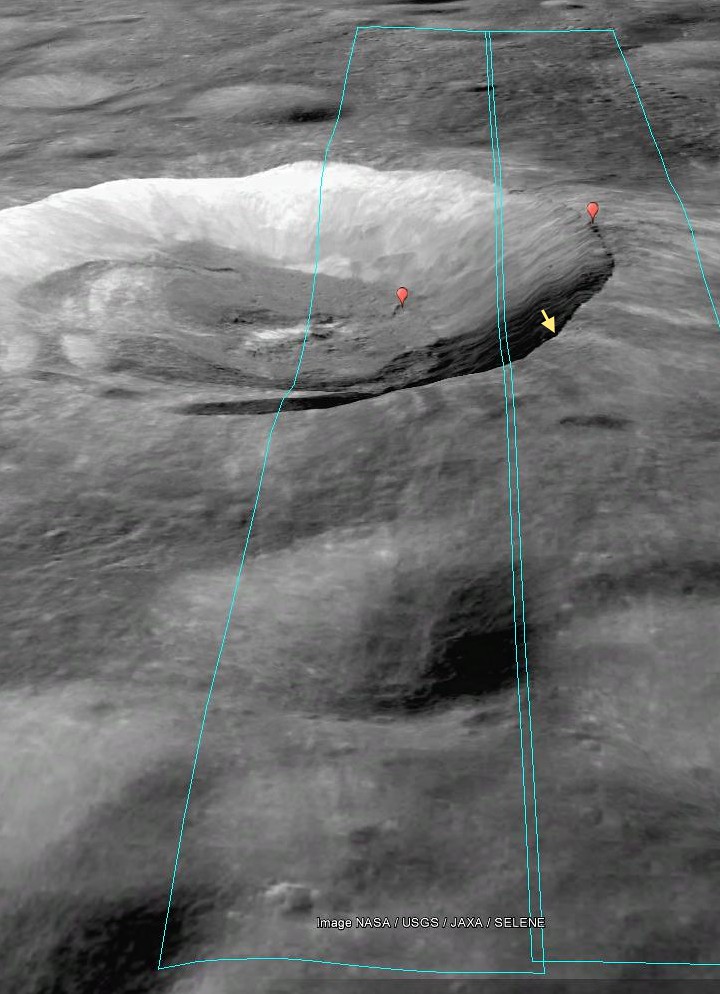 |
| Gravity is winning as boulders erode and ultimately tumble down from the rim of Moore F (23.8 km; 37.29°N, 185.03°E), in the north farside highlands. 862 meter-wide field of view from LROC NAC mosaic M1156517189LR, LRO orbit 22390, May 18, 2013, spacecraft and camera slew 11.24° from nadir, 84.67° sunset incidence angle, resolution 1.49 meters from 146 km over 37.45°N, 186.59°E [NASA/GSFC/Arizona State University]. |
H. Meyer
LROC News System
Moore F is located in the highlands of the lunar farside. Its well-defined rim, steep walls, and the predominance of boulders suggest that it is quite young.
Over time, micrometeorite bombardment, the shock from more recent impacts, and other erosional processes break down the rock that composes the crater rim, walls, and floor.
The result will eventually be a smoother, more subdued appearance. The many large blocks suggest that Moore F has only just begun to break down.
Over time, micrometeorite bombardment, the shock from more recent impacts, and other erosional processes break down the rock that composes the crater rim, walls, and floor.
The result will eventually be a smoother, more subdued appearance. The many large blocks suggest that Moore F has only just begun to break down.
The impact process left Moore F with exquisite impact melt, abundant terracing, and a stunning central uplift, but a closer look reveals subsequent modification courtesy of gravity that has yielded even more entrancing beauty in the flows streaming down its walls, as in the NAC image below.
granular material that acted like a fluid as it slid downslope. But how do we know if the flows formed by the downslope movement of dry, fine-grained material?
The sources of the flows can be traced to specific locations and outcrops along the rim of the crater, suggesting that this is material from the rim that was disturbed and flowed downslope. The slightly braided appearance suggests multiple depositional episodes. These episodes could have been triggered by collapsing material from the rim or wall, boulders (like those in the opening image) knocking material loose as they hurtle downhill, or by shockwaves from nearby impacts.
 |
| Footprint of LROC NAC observation M1156517189L & R, LRO orbit 22390, May 18, 2013 [PDS/Google Earth]. |
HERE.
Related Posts:




No comments:
Post a Comment
Welcome, Lunatics!